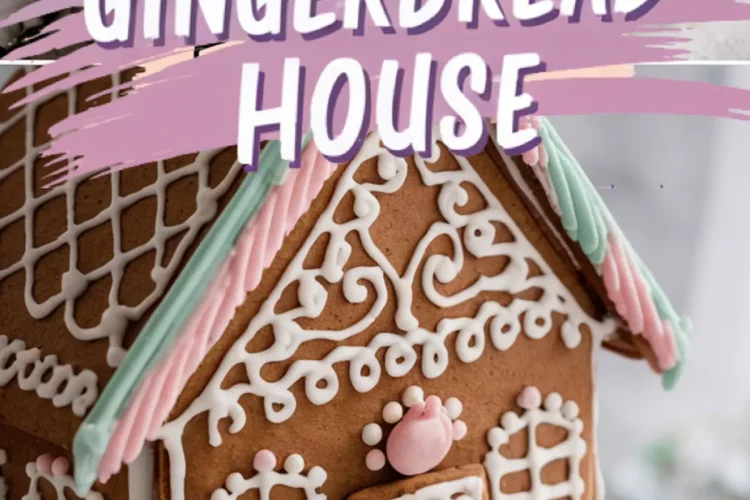I have cherished gingerbread creations since my childhood. My grandmother shared her old mixing bowl with me and told stories about baked wonders that brought families closer. That memory remains vivid, and this Easter Gingerbread House recipe embraces that sense of comfort.
My love for the sweet smell of molasses inspired me to try new shapes and designs each holiday. Egg hunts and pastel accents now appear every spring in my kitchen. I feel excitement every time I see that warm dough transform into sturdy panels ready for decorations.
The playful part of adding bright icing reminds me of chalk drawings on sunny sidewalks. I see colorful lines, sweet candies, and cheerful figures adorning each surface. My younger self would have beamed with joy at this edible project.
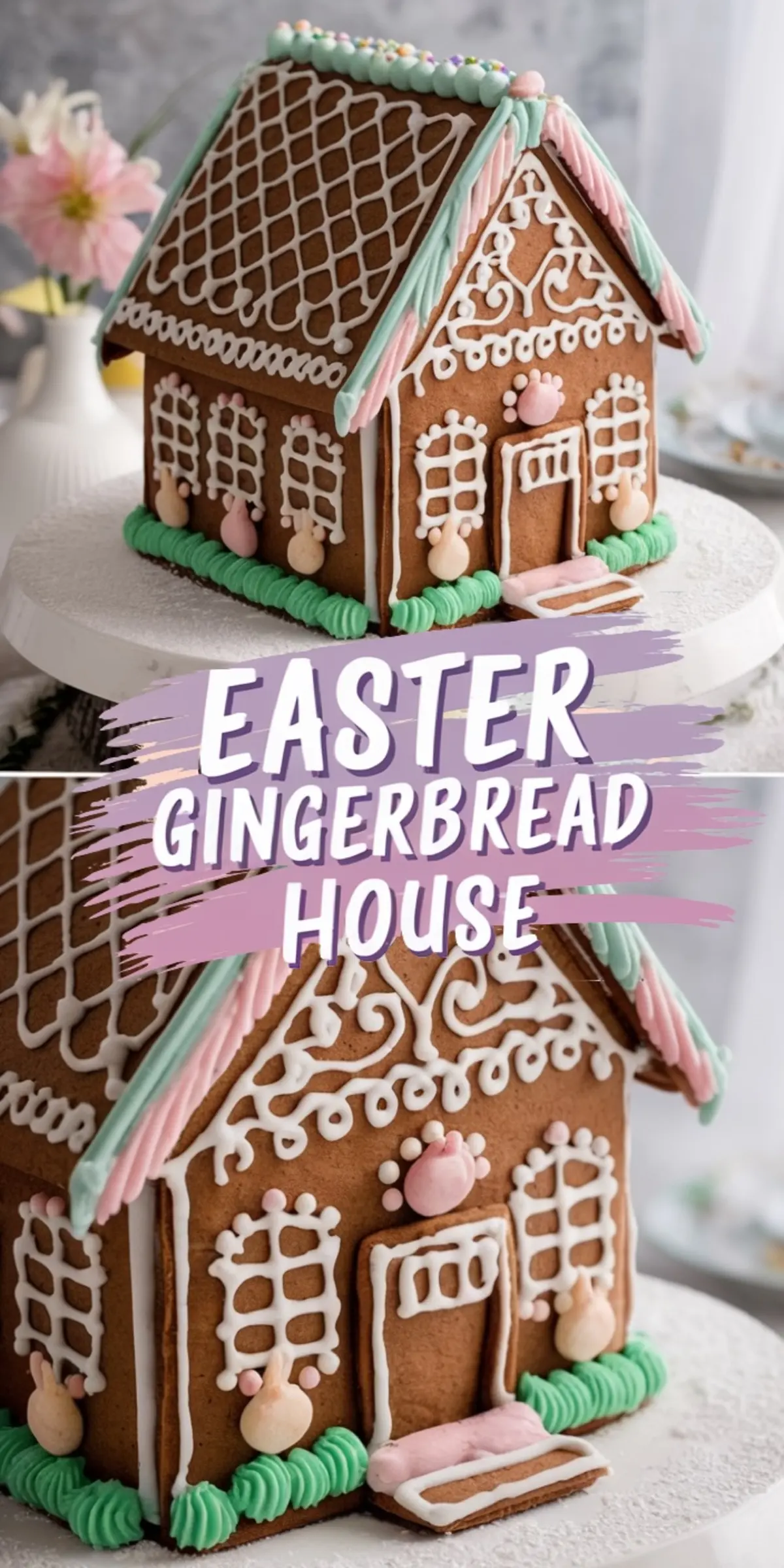
Why I Treasure This Easter Dessert
Gingerbread houses have a cozy feel, and I connect them with big family gatherings. I still recall leaning over the counter, sneaking tastes of dough, then trying to patch the cutouts without leaving crumbly edges. That ritual remains a highlight of any holiday for me.
An Easter Gingerbread House stands out with its pastel designs and candy eggs. People marvel at the bright roof or the surprise bunny figure near the window. I love seeing them gather around, pointing at each piped swirl or scattering of colorful sprinkles.
Friends sometimes ask how to keep the pieces from collapsing. My advice is to use a dependable dough that holds its shape in the oven. That method always gives me walls that fit snugly and a roof that rests without stress.
Gather the Gingerbread Ingredients for Spring Fun
All-purpose flour forms the base. Ground ginger, cinnamon, nutmeg, and cloves add a spicy, warm flavor. Baking soda, salt, softened butter, brown sugar, molasses, an egg, and vanilla extract come together to form the dough.
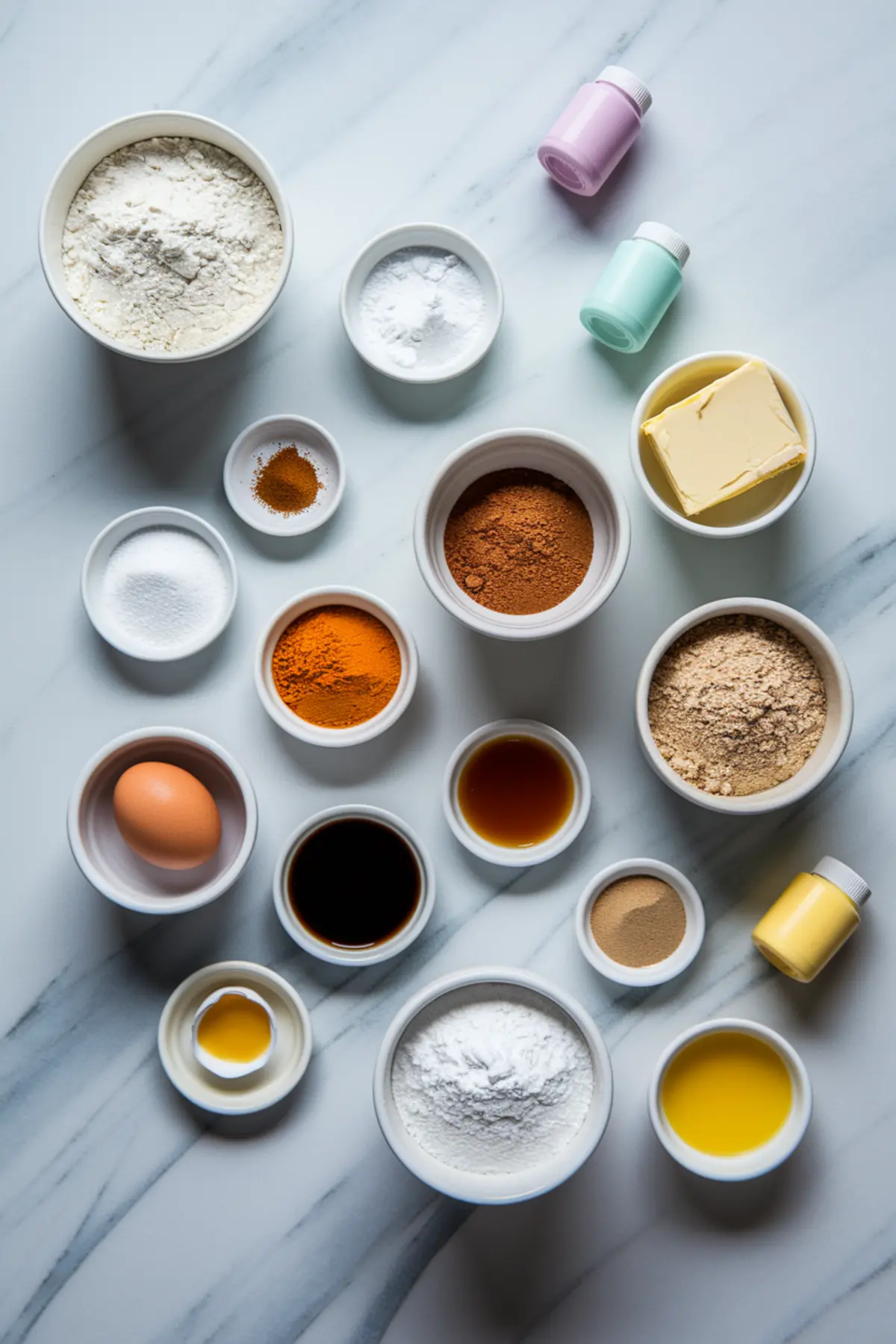
These everyday ingredients create a delicious gingerbread structure. Extra flour on the rolling surface keeps the dough easy to handle. A little rest time in the fridge can also help if it sticks to the countertop.
Royal icing then takes center stage as both adhesive and decoration. Powdered sugar, egg whites, and a dash of lemon juice get whipped into a bright, pipeable mixture. A few drops of food coloring transform it into cheerful pastels fit for any Easter celebration.
Craft the Dough and Shape Your Easter Gingerbread House
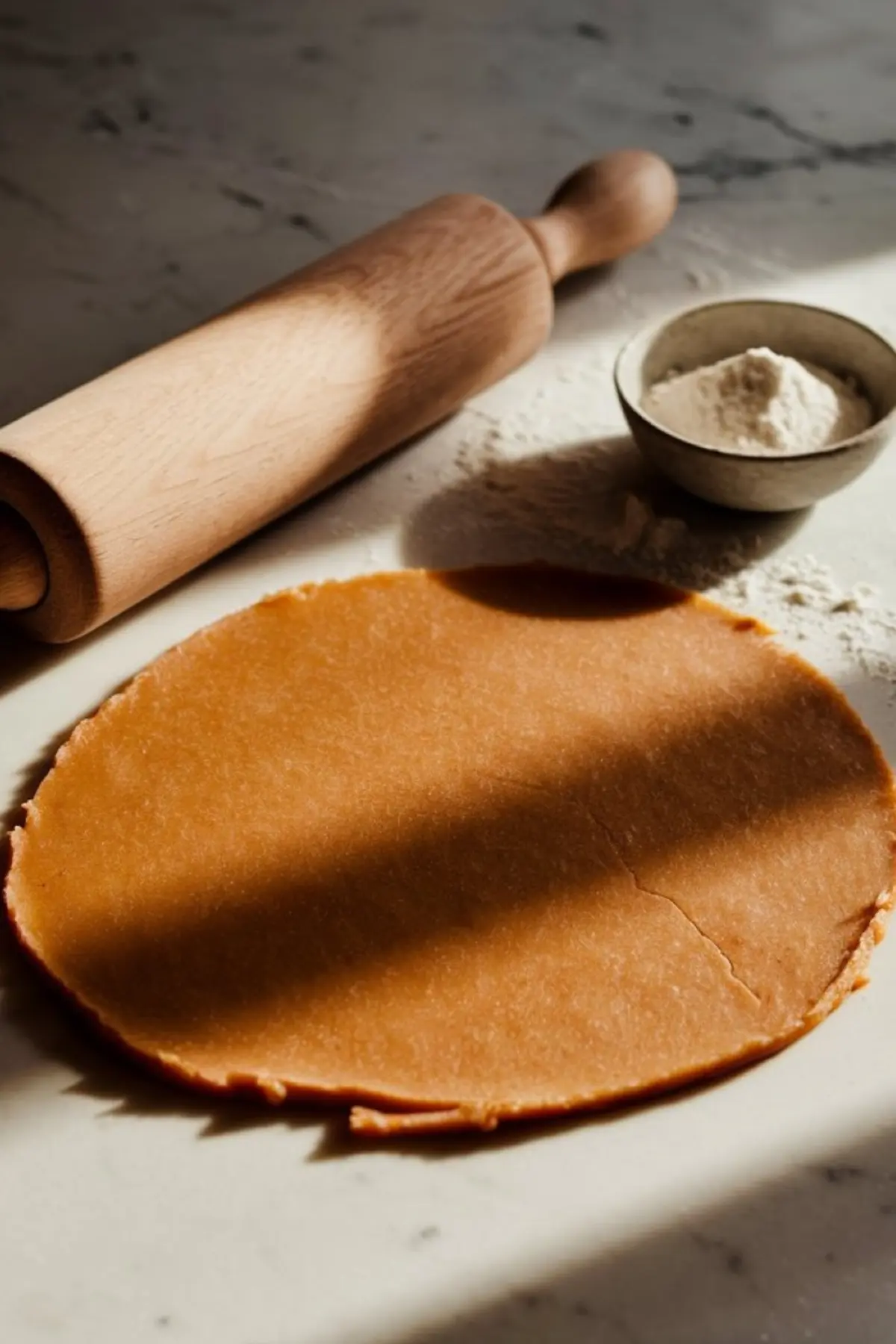
I start by blending the dry ingredients in one bowl. The softened butter, sugar, molasses, egg, and vanilla mingle in another bowl until smooth. Dry meets wet, and the dough forms before a brief chill if it becomes sticky.
Rolling the dough to about a quarter inch thickness gives me sturdy panels. A paper template or freehand cutting helps me create front, back, side walls, and roof pieces. Those go into the oven at 350°F (175°C) for around 10 to 12 minutes.
My favorite part is seeing the golden-brown surfaces emerge from the heat. The aroma fills the kitchen, and I wait for them to cool completely. Patience here prevents any breakage and makes assembly simpler.
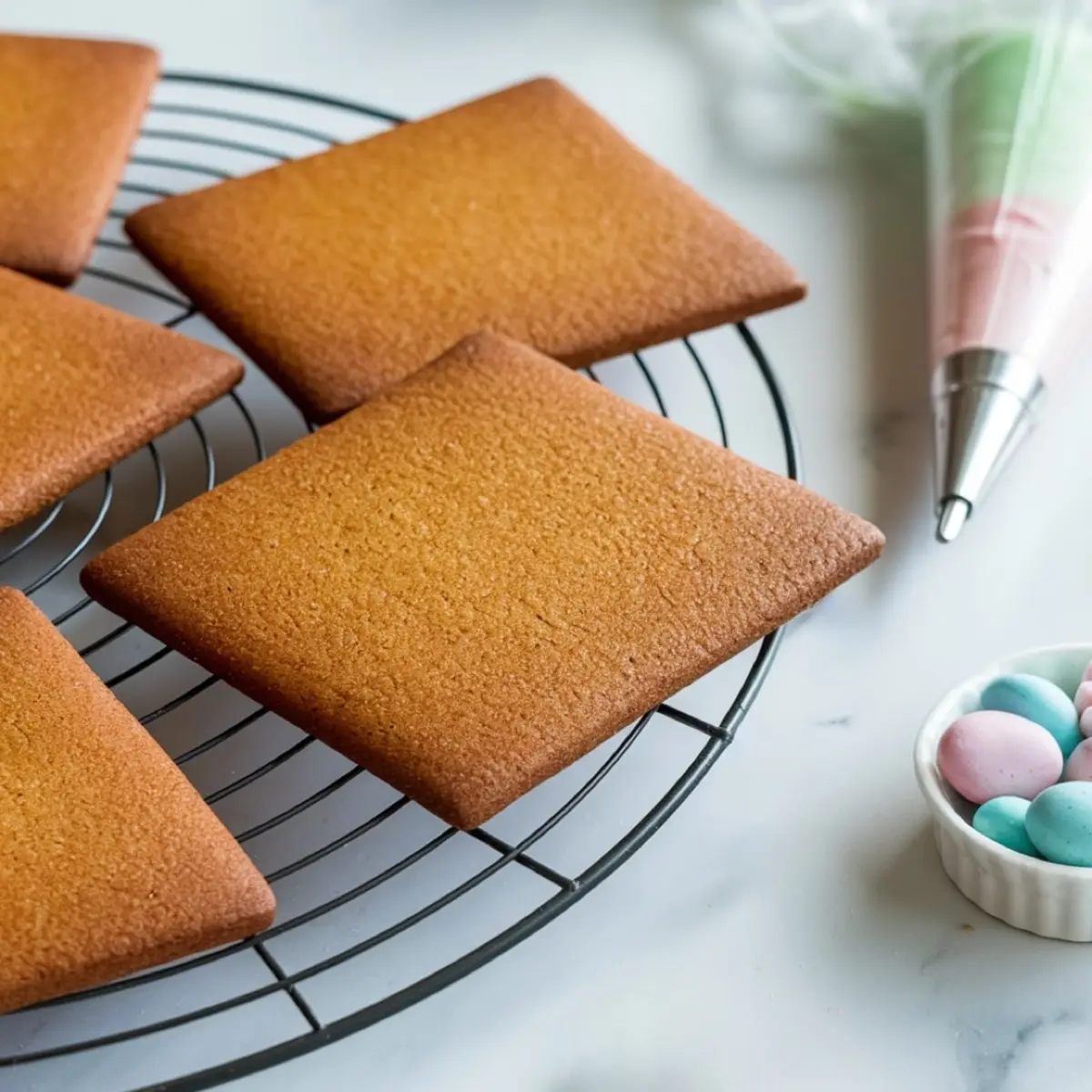
Royal Icing and Colorful Details
Egg whites, powdered sugar, and a touch of lemon juice whip into a glossy mixture. This icing holds the walls in place and also creates pretty decorations on every edge of the house. Pastel shades of pink, green, blue, and yellow bring a spring-like glow.
I pipe a thick line of icing on each seam, pressing the walls together and waiting a few seconds. The roof panels follow, and I let them sit for a bit before piping decorative lines or adding little flowers. That stable structure then welcomes all kinds of Easter candy and sprinkles.
Marshmallow bunnies perch near doorways. Mini chocolate eggs scatter across the front yard. Dyed coconut or tinted icing forms a grassy patch, and a swirl of pastel icing might highlight window frames.
Personal Advice for Easter Fun
I usually give the house walls a little time to rest before attaching the roof. That tip keeps everything secure. A wide spatula under each piece prevents accidents when transferring dough to the baking sheet.
Extra candy decorations add personality to the design. A few sugar flowers can brighten corners, and jelly beans are perfect for whimsical doorsteps. Children love to help place bunny marshmallows on window sills or create a path of chocolate eggs.
This treat pairs wonderfully with other Easter-themed goodies. An Easter Trifle might bring layers of fruit and cream, or an Easter Basket Cake could show off impressive frosting details. My niece also adores the Easter Bunny Cake and those sweet Peanut Butter Easter Eggs.
Enjoying the Finished Creation
A house decorated with candy brings smiles to family or friends who visit. I watch them point at the roof details or laugh at the bunny hidden around the corner. That sense of delight makes all the effort feel worthwhile.
I also love to photograph each side, capturing bright icing and edible decor from multiple angles. Taking a moment to admire the creation feels magical. Sharing these pictures on social platforms often sparks lovely comments from fellow dessert enthusiasts.
Moist gingerbread with a hint of spice makes the structure appealing to taste as well. The icing can be sweet, but fresh lemon juice keeps it balanced. The combination reminds me of cozy afternoons with a cup of tea in hand.
Pin This Dessert and Share Your Stories
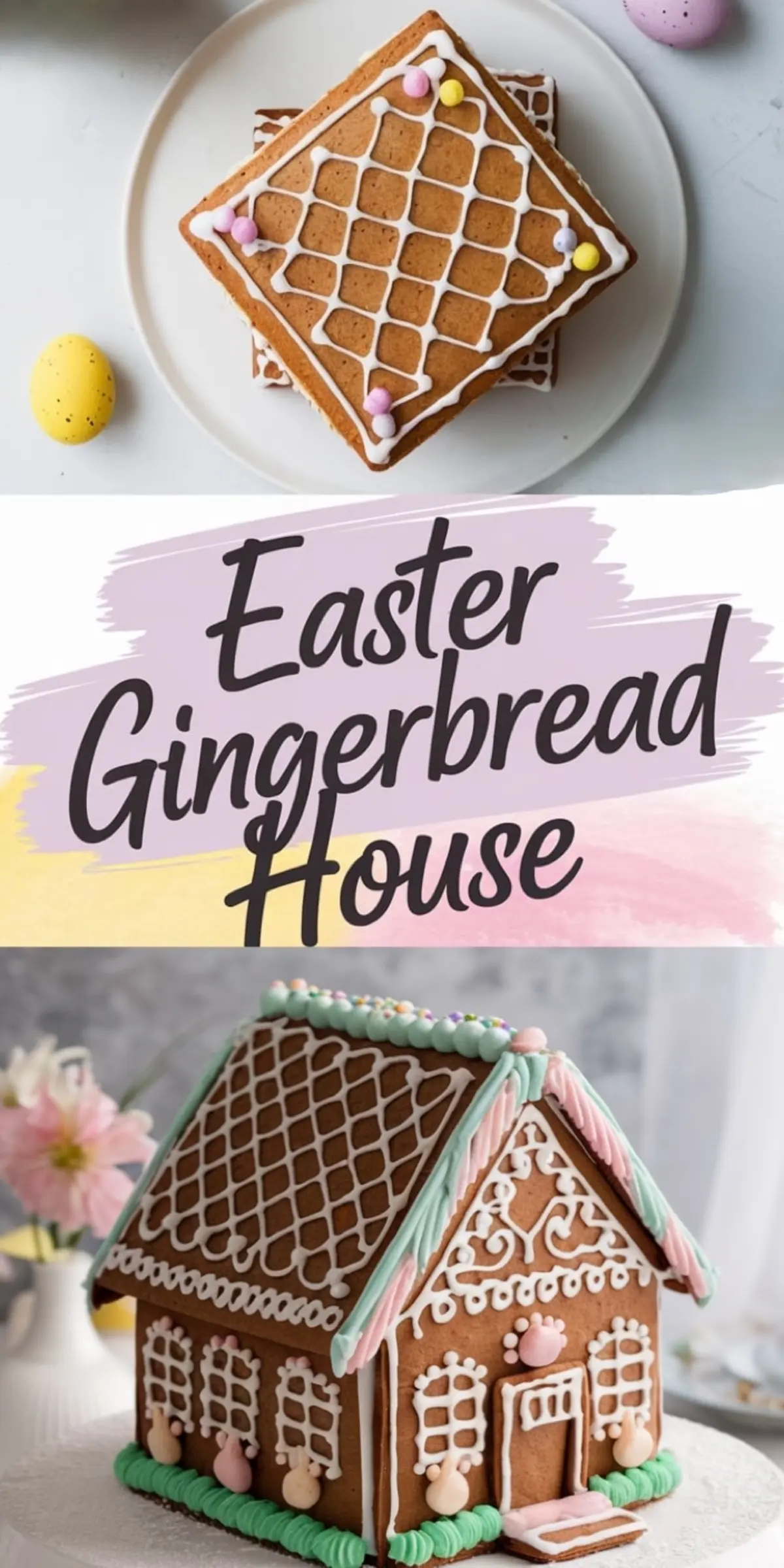
Pin this Easter Gingerbread House on your board. Share your results in the comments, and ask any questions you might have. This recipe sparks creativity, so let your imagination run wild.
I find delight in seeing how others decorate their houses. Many put marshmallow chicks in surprising spots or add tiny sugar blossoms around the roof. A community of bakers thrives when people share bright ideas and personal twists.
I hope you feel inspired to gather a few ingredients, form your panels, and invite loved ones to join the fun. Watching the house come to life can be a treasure. My own kitchen feels brighter every time I undertake this sweet project.
Easter Gingerbread House

For the perfect gingerbread house, you need a dough that holds its shape while baking. This recipe is sturdy yet still has that delightful, slightly chewy texture.
Ingredients
- For the Gingerbread Dough
- 3 ½ cups (440g) all-purpose flour
- 1 tablespoon ground ginger
- 2 teaspoons ground cinnamon
- ½ teaspoon ground nutmeg
- ½ teaspoon ground cloves
- ½ teaspoon baking soda
- ½ teaspoon salt
- ½ cup (115g) unsalted butter, softened
- ½ cup (100g) brown sugar
- ¾ cup (180ml) molasses
- 1 large egg
- 1 teaspoon vanilla extract
- For the Royal Icing (Edible Glue & Decoration)
- 3 cups (360g) powdered sugar
- 2 large egg whites
- 1 teaspoon lemon juice
- Food coloring (pastel shades like pink, green, blue, and yellow)
- Optional Decorations
- Mini chocolate eggs
- Pastel-colored sprinkles
- Marshmallow bunnies
- Shredded coconut (dyed green for grass)
- Sugar flowers
- Jelly beans
Instructions
Step 1: Make the Gingerbread Dough
In a large bowl, whisk together the flour, ginger, cinnamon, nutmeg, cloves, baking soda, and salt. Set aside.
In another large mixing bowl, beat the softened butter and brown sugar until fluffy.
Add the molasses, egg, and vanilla extract, mixing until smooth.
Gradually add the dry ingredients, mixing until a dough forms. If it’s too sticky, chill it for 30 minutes before rolling.
Step 2: Roll and Cut the Gingerbread House Pieces
Preheat your oven to 350°F (175°C) and line two baking sheets with parchment paper.
On a lightly floured surface, roll out the dough to about ¼-inch (6mm) thickness.
Using a template (or freehand), cut out the house pieces:
Two rectangles for the front and back walls
Two side walls
Two roof panels
Transfer to baking sheets and bake for 10-12 minutes or until firm. Let them cool completely before assembling.
Step 3: Make the Royal Icing
In a clean mixing bowl, beat the egg whites until frothy.
Gradually add powdered sugar while beating on low speed.
Add lemon juice and continue mixing until stiff peaks form.
Divide icing into bowls and color each with pastel food coloring. Transfer to piping bags.
Step 4: Assemble the Gingerbread House
Pipe thick royal icing along the edges of the front and side walls, attaching them together. Hold for a few seconds to set.
Attach the back wall and let it dry for 10-15 minutes before adding the roof panels.
Once assembled, let the house set for an hour before decorating.
Step 5: Decorate Your Easter Gingerbread House
Use pastel royal icing to pipe delicate lace designs, flowers, and swirls.
Add mini chocolate eggs around the base to resemble an Easter egg hunt.
Pipe green icing or sprinkle dyed coconut around the edges for grass.
Place bunny marshmallows near the windows for an adorable touch.
Notes
Let the baked gingerbread pieces cool completely before assembling to prevent softening or breakage. If the royal icing is too thick, add a few drops of lemon juice to adjust the consistency. For easier assembly, build the walls first and allow them to set before attaching the roof. Store any leftover royal icing in an airtight container at room temperature for up to 24 hours, stirring before use. Decorate with lightweight candies to avoid collapsing the structure.

